| We camped for several days on a nice site overlooking
the river at North Sydney towards the top end of Cape Breton Island. It is the
closest campsite to the Newfoundland ferries. The campsite also looks down
on this church. For such small communities they certainly have some
magnificent looking churches. | 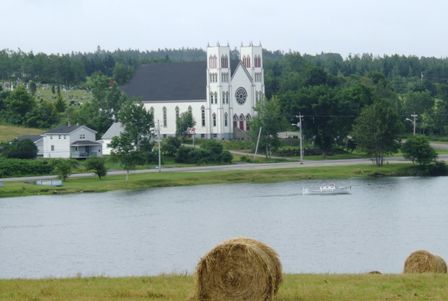 |
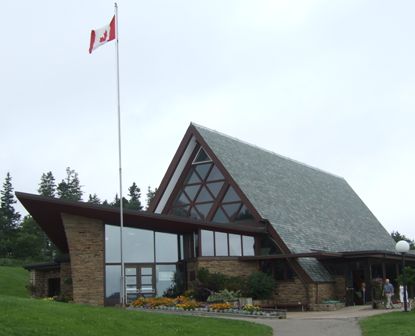 |
Today we left and headed south for Baddeck where there is a National Parks
museum celebrating the later life of Alexander Graham Bell. Baddeck is where
he spent the last 37 years of his life together with his wife Mabel. Their
house was called Beinn Bhreagh. This is the modern museum building - his
house is not open to the public. |
| Bell's father was a teacher of the deaf and
Alexander Bell became one too. He also married a lady who was deaf. This led to an
intense interest in sound waves which eventually led to his inventing the telephone.
Inside the museum is a display of old telephones as you might expect. These
are from 1879. He made his money from the invention of the telephone but
actually assigned all the income from that to his wife who was already a
wealthy woman. | 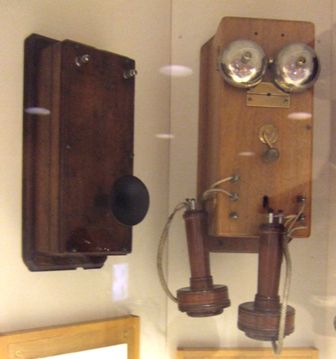 |
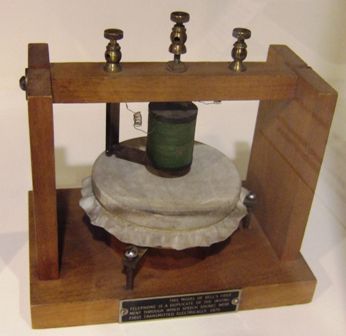 |
He was more of an inventor and experimenter than a scientist, so in many
cases he made a variety of models to explore the effect of the variation of
parameters. This is a model of the first telephone (Gallows Frame 1875)
transducers for converting sound to electricity - and vice versa. |
| This is the single pole magneto telephone used at the
Philadelphia exposition. There is also a double pole variant on display. | 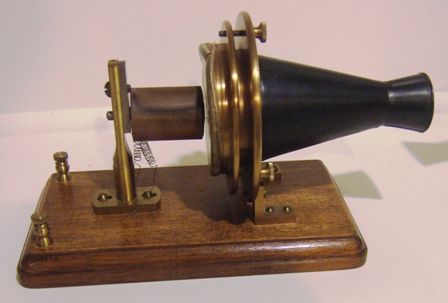 |
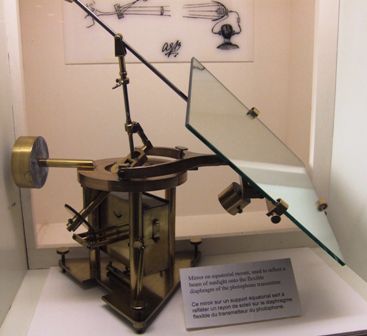 | He also used a beam of sunlight to act as a carrier
for the telephone signal. But the range was limited and it was very
dependant upon the weather, so he couldn't see a use for it. Today almost
all telephone traffic is carried on light waves. |
|
Another invention was the graphophone recording sound waves on a treadle-powered wax
cylinder. The concept eventually became the gramophone. | 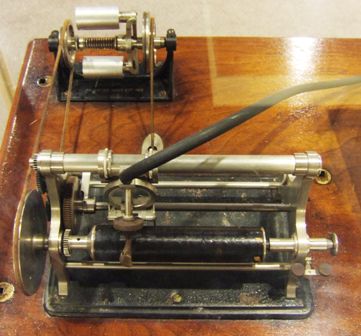 |
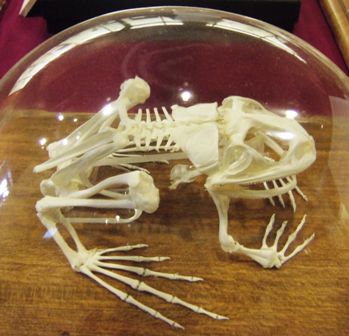 |
He was interested in everything including natural history, and there are several
skeletons of small creatures like this frog and a mole on display in glass
cases. |
Another of Bell's interest was in flight, being a contemporary of the Wright
Brothers. He was in partnership in the Aerial Experimental Association with
others including his wife, Mabel, and Glenn Curtiss, who's motorcycle engines
powered many of the very early aircraft and who went on to form his own aircraft
company. They invented ailerons to control the flight such as are still in use today.
They actually built the first aircraft to fly in Canada.
| The last major area Bell became involved in was that
of hydrofoils. This is a model of the HD4, the most successful of his
machines which reached over
100km/hr and was the fastest boat in the world at that time. If the company
formed by himself and his associates had received the promised American engines in time, then
they may well have had some orders. However by the time the engines arrived
World War I
was over and there was no demand any more for such a high speed vessel. | 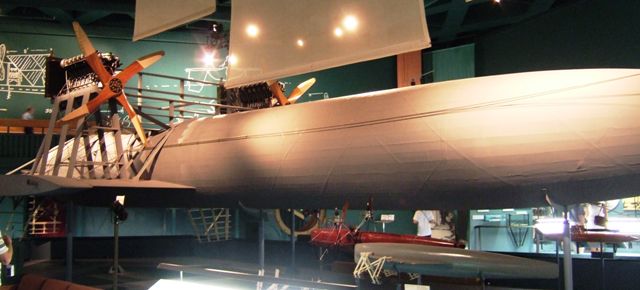 |
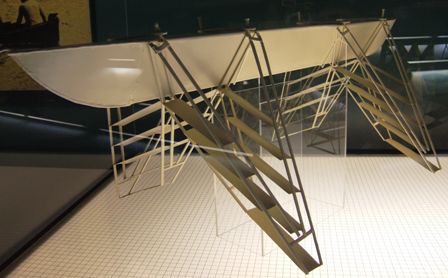 |
He did experiment though with models of hydrofoils of all shapes. He was
always testing ideas with models. |
| This was a model destined to be the HD6 which never
got made since nobody provided the funds by buying the HD4s. | 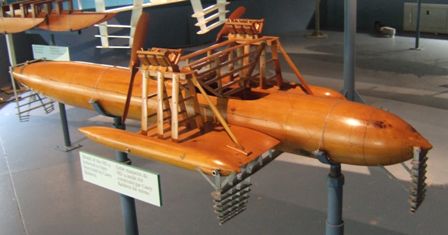 |
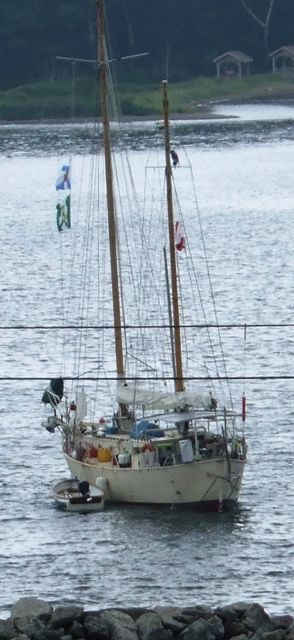 |
The museum looks out over a small harbour which had many sailing yachts at
anchor. The whole area is very popular with this type of vessel. |
|